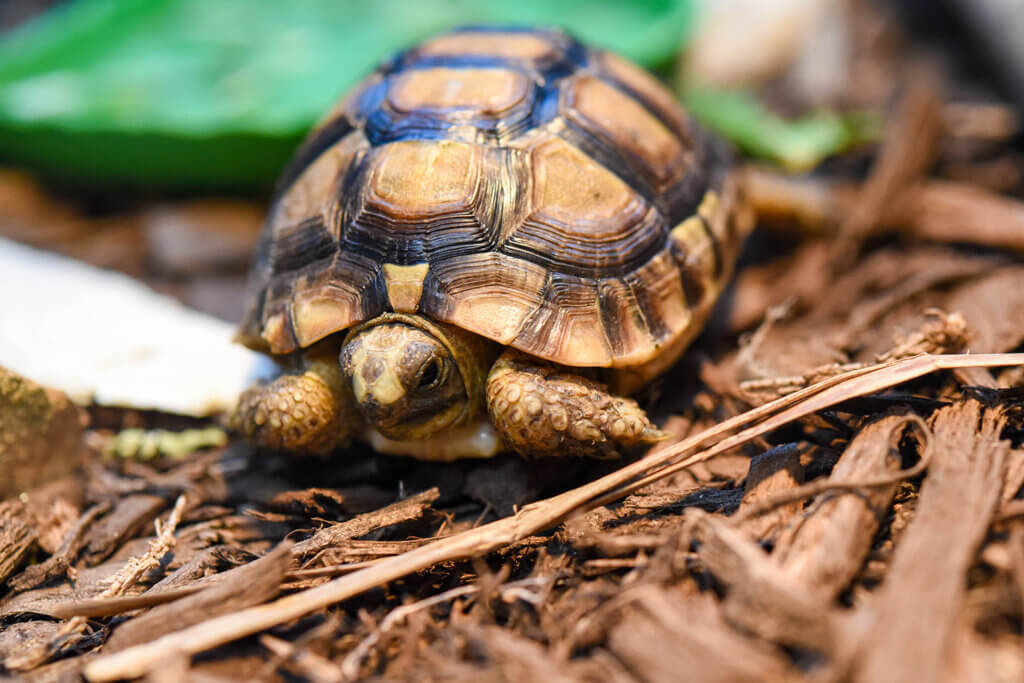Overview
“Where I live”
These tiny tortoises are able to survive in a wide range of habitats, from dry scrub and pine woods, to semi-desert, to grasslands, to temperate forests.
“How I live there”
In much of the Greek tortoise range, summers can be quite hot. Behavioral adaptations help them reduce exposure to the heat. They limit most activity to cooler parts of the day, like dawn and sunset. During the hottest part of the day they may remain in shaded areas or even partly bury themselves in the sand in a shady area to remain cool. In cooler parts of their range, Greek tortoises may undergo a type of hibernation in winter.
“Making my mark”
In Greek tortoises, members of both sexes have a distinctive spur on either side of the tail. These spurs are thought to help the tortoises to dig and to anchor themselves to the ground.
“What eats me”
Snakes, birds of prey, and wild boar may all prey on Greek tortoises. This tortoise’s primary defense is the ability to pull its head and legs into its shell. Tan and brown coloration on the shell and limbs can also act as camouflage to help the tortoise remain unseen by predators.
Raising Young
Greek tortoises are generally solitary, with males and females coming together for breeding. When she is ready to lay her eggs, a female Greek tortoise will dig a hole about 10 cm (4 inches) into the ground and deposit her eggs there. While she may lay up to 7 eggs, 3 or 4 per clutch is more common. After she lays her eggs, covers them with a protective layer of mucus and soil, and refills the nest site, her job is done! The eggs hatch between 2 and 3 months later, and the hatchlings will receive no ongoing care from their parents.
How to Help Me
Although IUCN currently indicates the species at a moderate risk for extinction, the assessment was done long ago, and Greek tortoise populations have likely continued to decline. These tortoises have been highly exploited in the pet trade, threatening the populations in their native range. Like many species worldwide, Greek tortoises also face loss of their habitat. Much of their habitat has been overgrazed by livestock or destroyed by urbanization.
But where human actions are the problem, humans can be the solution! Our day-to-day choices have a local and global influence on wildlife and wild places. You can have a positive effect as a responsible pet owner. How? By not supporting the wild—often illegal—pet trade. Be sure any animal you obtain as a pet comes from a reputable breeder. Keep in mind as well that wild (non-domesticated) animals generally do not make good pets. They typically have complex needs that most people cannot meet in their homes. Before getting any kind of animal as a pet, make sure you know everything you need to care for it properly.
Taxonomy
- Kingdom: Animalia
- Phylum: Chordata
- Subphylum: Vertebrata
- Class: Reptila
- Order: Testudines
- Family: Testudinidae
- Genera: Testudo
- Species: graeca
What is an Animal Ambassador?
The Maryland Zoo refers to its special collection of education program animals as “Animal Ambassadors.” The Zoo currently cares for more than 60 Animal Ambassadors, representing more than 40 species, both native and exotic. These animals are managed separately from the rest of the Zoo’s collection and cannot be seen on exhibit at the Zoo. However, many can be seen up close and personal on a rotating basis at Creature Encounters, the Zoo’s outdoor education center; at camp and school programs at the Zoo; as featured participants in community-based Outreach programs; and at special events on and off Zoo grounds.
Animal Ambassadors spend countless hours working with their human handlers, developing bonds of trust and communication that will allow them to appear in front of audiences large and small. They are not show animals. They behave naturally, focusing audiences’ attention on their natural behaviors and adaptations and giving living, breathing meaning to concepts and topics that students may be studying.
Animal Ambassadors travel all over the state of Maryland and beyond, and many also make local and national media appearances, educating about wildlife while representing the Zoo and its commitments to animal welfare and conservation.
What is The Animal Embassy?
The Animal Embassy at The Maryland Zoo is an off-exhibit area that is not open to the public. It is where the Zoo’s “Animal Ambassadors,” or education program animals, live. The Embassy is home to more than 60 individual animals representing more than 40 different species. It is staffed by its own dedicated group of keepers and volunteers and has both indoor and outdoor living space for the animals.

